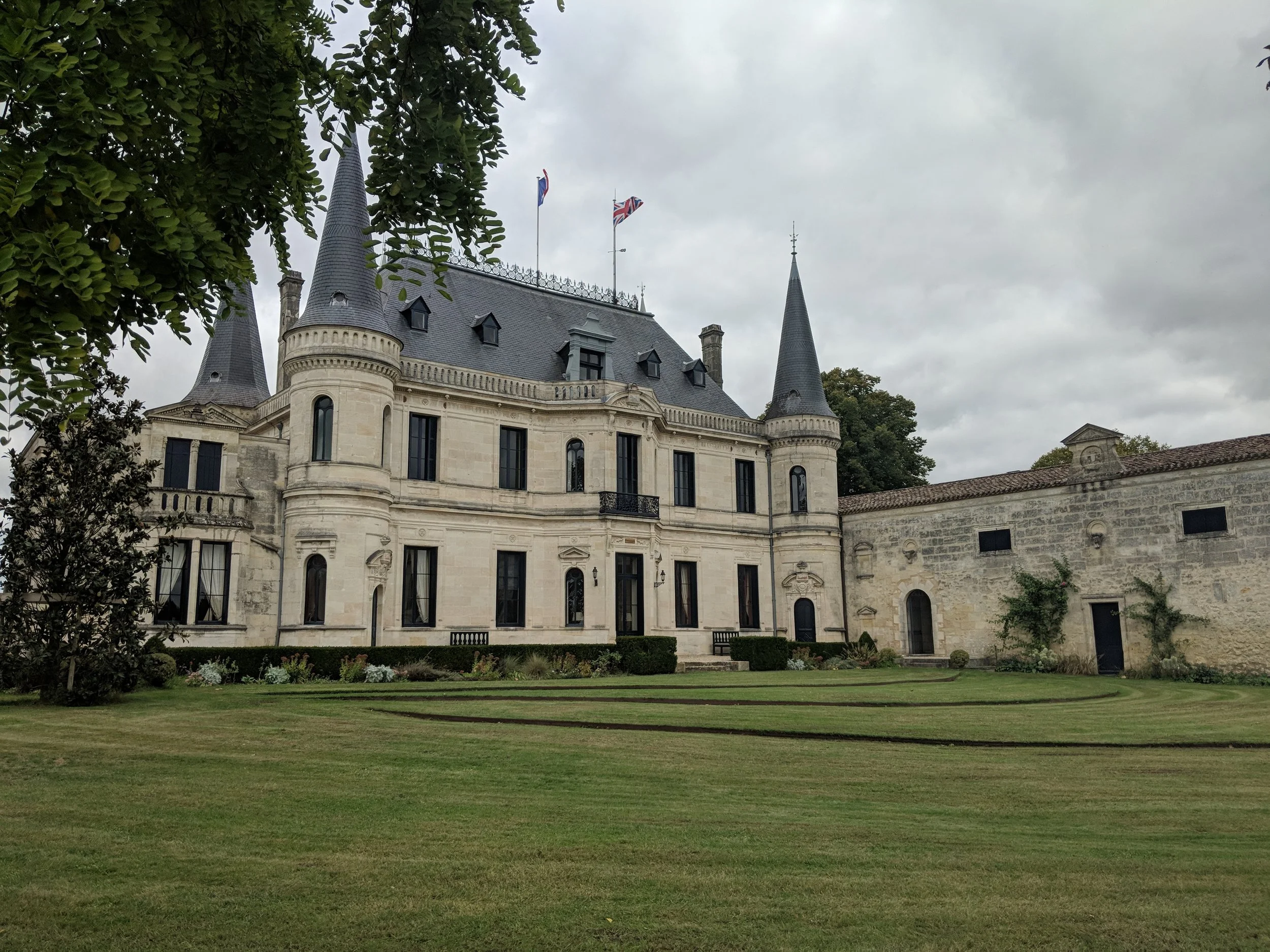The Médoc is the best-known area of Bordeaux and is located on the ‘left bank’ of the river Garonne. There are two different sub-regions the Haut-Médoc and the Médoc and six communes. From North to South these are Saint-Estèphe, Pauillac, Saint-Julien, Listrac, Moulis and Margaux. These smaller appellations produce some of the World’s finest and most expensive red wines.
The History of the Médoc.
English wine consumption has a big influence on the history of the Médoc. Until the 17th century, much of the current vineyard areas were marshlands. This land was then drained by Dutch engineers, which rapidly increased suitable vineyard space. The position of the vineyards and chateaux on the left bank meant the wines were easily exported into the Atlantic Ocean and up north to the UK. The wines were so popular in the UK that the World-renowned term ‘Claret’ was created for the English market.
In 1855, another very important event occurred- The Paris Exhibition. This cemented the reputation of the Médoc by highlighting the best wines on a 5-level scale. The 1st growths, Chateau Margaux, Chateau Latour and Chateau Lafite Rothschild were chosen and only one, Haut Brion was included from outside of the Médoc. In 1973, Chateau Mouton Rothschild was promoted from 2nd to 1st growth, the only time in history where an alteration has occurred.
The Grapes
The entire Médoc appellation, including the communes and Haut-Médoc, is committed to red wine. The wines have a strong Cabernet Sauvignon influence. Merlot, Cabernet Franc, Malbec and Petit Verdot are also blended but are typically used to enhance the final wine. White wine production is not permitted and must be bottled under the generic Bordeaux AOC classification however, many producers make some excellent white wines alongside the reds.
The Classification System.
The Médoc has one of the most interesting classification systems for wine around the world. It began in 1855 for the Paris Exhibition to award the top, most prestigious Chateaux. There are 5 levels to the system. Another, less well-known classification system is the Bordeaux Crus Bourgeois. This covers high-quality wines that were left out (or didn’t exist) in 1855. The Chateaux can be located throughout the Médoc (Médoc, Haut-Médoc or the communes).
The Haut-Médoc
The Haut-Médoc is further inland and closer to the city of Bordeaux. This position means the vines have greater shelter from the wind and rain coming off the Atlantic Ocean. Cabernet dominates here and produces wines with great structure and age-ability. The wines have concentrated black fruit flavours and high tannins. Oak ageing is extremely common to soften the otherwise harsh structure.
The Médoc Appellation.
The Médoc, the sub-region closest to the sea, and furthest from Bordeaux city centre provides the most affordable reds. Cabernet Sauvignon and Merlot are the most planted varieties. The grape variety chosen is very dependent on the individual vineyard’s soil. Cabernet Sauvignon grows on the darker, warmer gravel soils to help the grapes ripen to a suitable level. Merlot can grow on the cooler clay soils as it is more easy and earlier ripening.
The Communes.
There are 6 communes in Médoc, four St-Estèphe, Pauillac, St-Julien and Margaux are regarded as the major four.
St-Estèphe
The furthest north of the communes in the Médoc. It is just north of Pauillac and around the same size (however, it is technically the largest commune). It wasn’t highly commended during the 1855 classification so can be a fantastic area to find high-quality Cru Bourgeois.
Pauillac
This highly celebrated commune is home to Mouton Rothschild, Latour and Lafite. This makes it by far the most decorated commune in terms of 1st growth chateaux. The wines have great potential to age and develop rich earthy, leather, savoury and meaty characters. One of the key features often identified in the wines of Pauillac is the noticeable pencil lead aromas.
St-Julien
This small commune has a range of soil types and makes styles that reflect where they were grown. Although the area has no 1st growth chateaux it has five 2nd growths.
Listrac
There are no classed growths in Listrac. It has had a relatively poor reputation for producing rustic and harsh wines. However, improved viticulture and winemaking, including increasing the amount of Merlot in the wine, has led to the production of many interesting bottles.
Moulis
There are no classed growths in Moulis. It is the smallest commune in the Médoc. Like, Listrac the area suffered from a mixed reputation but now the quality is drastically improving and many ‘great value for money’ bottles can be found.
Margaux
This is the furthest south of the communes and is best known for the 1st growth Chateau Margaux. It is close to Bordeaux city and makes for the perfect day trip. Generally, the wines are known to be silkier and elegant with velvet tannins.




